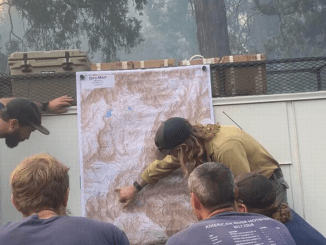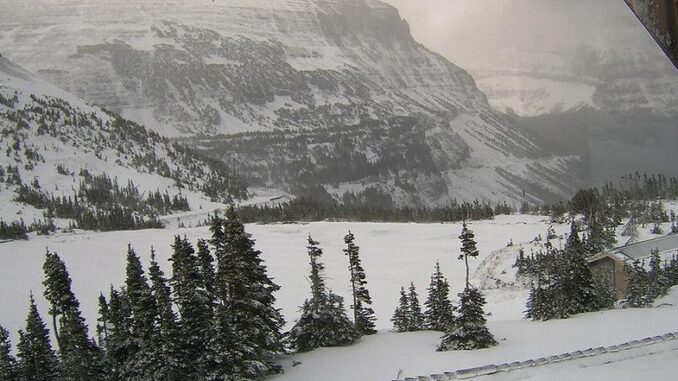
By Micah Drew
GLACIER NATIONAL PARK, Montana, October 27, 2025 (ENS) – Glacier National Park remains open to visitors during the current federal government shutdown, which a former superintendent said could lead to trash pileup, a lack of communication for visitors, and limited emergency response operations.
Last month, former Glacier National Park Superintendent Jeff Mow joined more than 40 former national park superintendents in signing a letter urging the federal government to close National Park Service sites in the event of a government shutdown.
“Past shutdowns in which gates remained open with limited staff have hurt our parks: iconic symbols cut down and vandalized, trash piled up, habitats destroyed, and visitor safety jeopardized. If you don’t act now, history is not just doomed to repeat itself, the damage could in fact be much worse,” the park superintendents’ letter says.
When the calendar rolled over to October, the federal government shut down and roughly 750,000 federal workers were furloughed, but parks stayed open.
A bright red banner across the websites for Glacier and Yellowstone national parks states that national parks “remain as accessible as possible” during the shutdown, but services may be limited or unavailable. Visitors are directed to a Department of the Interior webpage that lists contingency plan documents for each agency group, which vaguely outline what operations can remain.
However, those contingency plans are about the only communication given to the public about national park system operations, which Mow said adds to the uncertainty for visitors and staff alike.
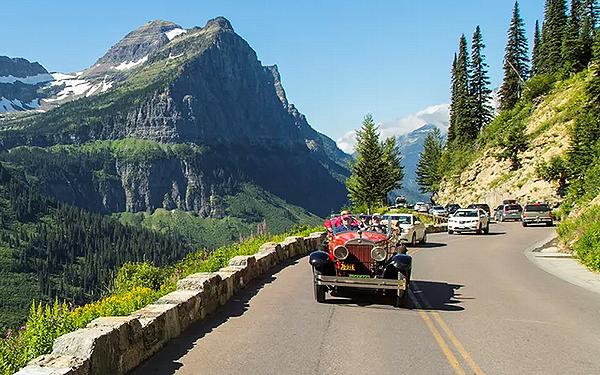
For example, Glacier National Park’s Going-to-the-Sun Road typically closes the third Monday of October, but that is contingent on weather conditions along the alpine stretches of the 50-mile scenic byway. The park superintendent has the ability to close the road if inclement weather hits, and typically, any winter-related closures are communicated through press releases, social media posts, and updates to the park’s website.
According to Glacier’s official social media accounts, the National Park Service “will continue to share critical information about park access, safety, and resources. Some services may be limited.”
But during a shutdown of the federal government, communication isn’t a top priority.
Glacier Park staff did send out an update on October 4 that the Sun Road will close at 5 p.m. between Avalanche and Rising Sun due to winter weather warnings.
But Glacier’s communications specialist is among those furloughed, and cannot respond to emails or speak on behalf of the park. Emails sent to the National Park Service’s media office about what constitutes “critical information about park access” have gone unanswered.
“If there’s a snowstorm that closes the Sun Road, will that show up on the website?” Mow said. “I don’t know. We’ll see how long it stays open.”
Mow served as Glacier’s superintendent during the last government shutdown, a 35-day long affair that stretched from December 2018 to January 2019 during President Donald Trump’s first administration.
Back then, Mow said, Glacier was fully in winter mode – most roads into the park, including Going-to-the-Sun Road, were closed, and operations and programming were already parred down compared to peak season.
Mow was among the employees furloughed during the last shutdown as a “nonessential” part of daily operations. He said one of the biggest concerns for the year-round staff who also ended up furloughed was the lack of communication – about what employees could still do, any timeline for returning to work, and whether to sign up for unemployment benefits.
“It’s adding more of this uncertainty in their lives, and this administration has certainly done a lot to add uncertainty into federal employees’ lives,” Mow said.
In 2018, Mow said there was an employee Facebook page where staff could post updates to communicate – furloughed staff can’t access their emails or government-issued devices – and they found ways to bring the staff together, including setting up work days at the local food bank to “maintain our community as employees of Glacier National Park,” Mow said.
There is no indication how long the current shutdown will last.
The current shutdown comes amid one of the largest reductions in force across the National Park system. According to Politico, since Trump took office for his second term, the Park Service has lost roughly 35 percent of its staff, while the Interior Department as a whole is down around 14 percent.
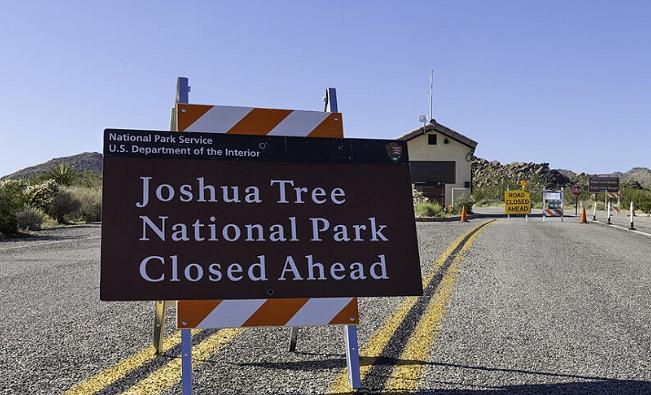
An internal memo from Glacier obtained by the Daily Montanan in May indicated that 20 percent of park positions were vacant, including almost half of dispatch positions.
A shutdown further compounds problems from short staffing.
“National parks are not designed to run with so little staff. I think that’s one of the things that differentiates us from other public lands – national parks are designed and staffed for high levels of visitation,” Mow said. “There’s lots of infrastructure, visitor information centers, and a response system for visitor safety issues. Our counterparts in the Fish & Wildlife Service and Bureau of Land Management, not so much, they depend more on local and county resources.”
The contingency plan released by the National Park Service said “park roads, lookouts, trails, and open-air memorials will generally remain accessible to visitors.” However, parks without “accessible areas,” such as primarily indoor exhibitions, will be closed, and sites currently open could close if damage is done to park resources or garbage is building up, the plan says.
For Glacier and Yellowstone, two massive parks where the main attractions are natural features more than exhibitions, that means the public is free to roam.
Some Services Still Operating
The Montana Free Press reported in early October that Yellowstone’s entrance stations are open, concessionaire-run businesses including lodges and restaurants are operational, and private commercial guiding companies were still allowed to operate within open parts of the Park.
In Glacier, private concessionaire Xanterra, which operates lodges, restaurants, gift shops, the iconic red bus tours, and crucially, restrooms, “will be open and welcoming guests and visitors from around the world,” according to their website.
Andrew Heltzel, chief commercial officer for Xanterra, said in an email that staffing has remained the same at both parks as the shutdown began, and the Park Service had shared that entrances and roads to the parks would remain open and accessible.
“We are optimistic that our guests will continue to come and enjoy the incredible landscapes and experiences these parks offer. Travelers can book with confidence knowing that we are working closely with the National Park Service and we are committed to providing clear and timely communication to our guests,” Heltzel said.
Agency activities that are supposed to continue during a shutdown, subject to the continued availability of funds, according to the National Park Service in a planning document, are:
- Law enforcement and emergency response;
- Border and coastal protection and surveillance;
- Fire suppression for active fires or monitoring areas currently under a fire watch, or staffing commensurate with Preparedness Level conditions;
- Protection of Federal lands, buildings, waterways, equipment, and other property within the National Park System, including research property;
- Activities essential to ensure continued public health and safety, including safe use of food and drugs and safe use of hazardous materials, drinking water, and sewage treatment operation;
- Activities that ensure production of power and maintenance of the power distribution system;
- Activities related to United States Park Police annuity benefits transfer;
- Activities related to facilitation of First Amendment activities including permitting and monitoring (necessarily implied by law, U.S. Constitution, Amendment I); and
- Activities necessary to oversee or support excepted or exempted activities, including budget, finance, procurement, communications, human resources, and information technology services.
Sarah Lundstrum, the Glacier program manager for the National Parks Conservation Association, said the organization has pushed for parks to close down if they aren’t being fully staffed.
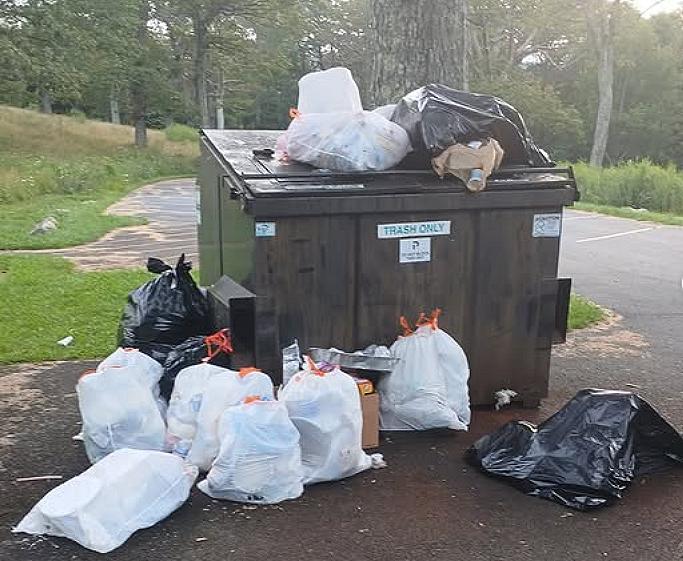
“In previous years, we’ve seen vandalism, trees cut down, petroglyphs vandalized, people driving where they shouldn’t, trash, garbage and feces piling up in national parks,” Lundstrum said. “If there’s not going to be full staffing, parks shouldn’t be open.”
The association is encouraging people to avoid going to parks, but if they do visit, to do so responsibly.
“Be prepared for not a lot of services. Recreate responsibly, leave no trace, take your garbage with you,” Lundstrum said. “And be polite to the staff that are there – they’re under a lot of stress – so just be a good steward.”
Earlier this month, the National Park Service released an economic report showing that Glacier and Yellowstone generated roughly $1.5 billion in nearby communities in 2024.
While Glacier has entered its shoulder season and nearby communities didn’t rely on October visitation to bolster their bottom lines, other parks, including Yellowstone and those in warmer climates, such as Utah and southern California, are closer to peak season, Lundstrum said, and are preparing for much larger economic impacts of a shutdown.
During the last shutdown, public lands across the country saw issues with garbage buildup and human waste as workers were unable to take out the trash and restock toilet paper in public restrooms.
“Whenever we go into these minimal-operations mode, things will suffer. Resources will suffer, staffing will suffer, visitor safety – if there are emergency response needs – they will probably suffer some,” Mow added. “Honestly, it should not be a goal for the National Park Service of ‘how to run a park during a shutdown.”
Editor’s Note: This article was originally published in The Daily Montanan and is republished under Creative Commons license CC BY-NC-ND 4.0. It has been updated and edited for length..
Featured image: Located at the highest point along the Going-to-the-Sun Road, the Logan Pass area includes the Logan Pass Visitor Center, trailheads for the Highline and Hidden Lake trails, and normally has restrooms, potable water, and shuttle service. This view shows the Logan Pass parking lot with Mt. Pollock and Going-to-the-Sun Mountain in the background.
This webcam image is shown courtesy of a partnership between the Daily Montanan and the Glacier National Park Conservancy. Click here to see the Conservancy’s three Logan Pass webcams at once.
© 2025, Environment News Service. All rights reserved. Content may be quoted only with proper attribution and a direct link to the original article. Full reproduction is prohibited.

